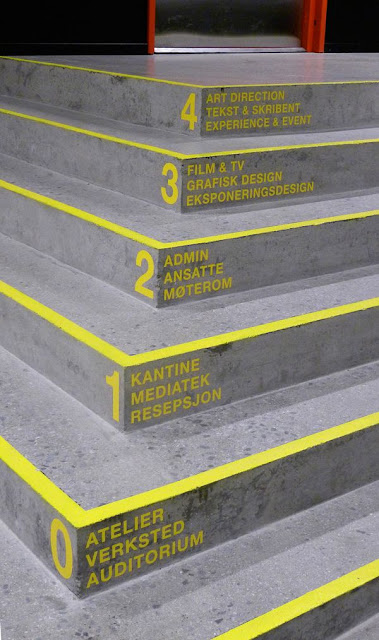Broadly researching other forms of wayfinding I looked at a variety of signage systems, looking particularly at placement, scale and colour:
The use of colour to create an identity for different floors within a building is one of the most used but most effective methods of wayfinding - it can vary greatly between scales, from just the colour of the writing on a sign to a full block colour wall. The most common placement for signage is on walls but extending signs onto the floor or ceiling can also be highly effective, although this is specific to the environment as floor signs will be obscured in places with heavy footfall, and ceiling mounted signage would be impractical in an environment with tall structures. The use of large signage, typically stretching from floor to ceiling, is increasingly common as it shifts the function of the sign from a simple piece of wayfinding to an architectural and design statement. There is also an increasing trend for signage to be applied directly to a surface rather than mounting it on a board of plaque, and mounting a sign on a contrasting or complementary material can be highly effective in terms of visibility, clarity and cohesion.
Within Liberty Park it would be most appropriate for the signage to be situated on the walls, as the floor is subject to continual heavy footfall, and placing signs either on or hanging from the ceiling could prove complicated and confusing for new tenants and or/international students. Although there is a greater potential for the signage to be damaged when places on the walls, it is the clearest and most simple placement for signs that need to be found, recognised and understood quickly and by a large number of people.










